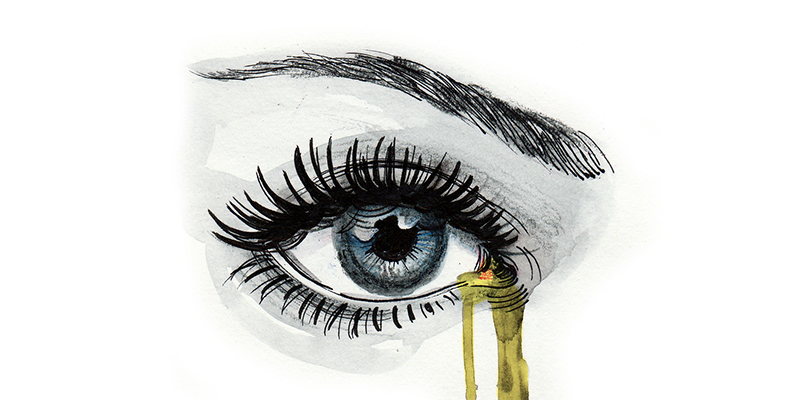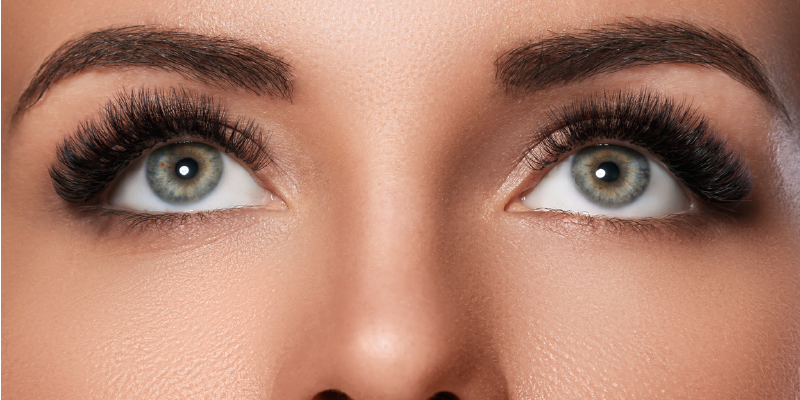Pinguecula are bumps that form on the whites of the eye. The conjunctiva, which is the clear outer layer of the eye, thickens to form a yellowish lump. Pinguecula are non cancerous, but can become inflamed and uncomfortable if they develop into pingueculitis. Pinguecula most often form on the white of the eye in the corner of the eye closer to the nose, though they can also develop in the outer corner of the eye closer to the ear.
What Causes Pinguecula

Pinguecula are most often caused by exposure to ultraviolet radiation from the sun. Dust and wind can also cause pinguecula to form. These environmental factors cause the collagen fibers of the sclera and conjunctiva to degrade, producing deformed elastin fibers. The resulting pinguecula is similar to a callus.
The condition is also linked to dry eye disease. Those suffering from dry eye are more likely to be affected by pingueculitis. Although not directly related, the dry eye symptoms that stem from Demodex mites can also be linked to those that stem from pingueculitis. In these instances, it would be both beneficial and worthwhile to try Cliradex to kill mites and help relieve symptoms.
Pinguecula are most common in middle-aged people, but younger people and children can be affected as well. Those who spend a good deal of time outdoors without wearing sunglasses are most likely to develop pinguecula, and are at greater risk for experiencing pingueculitis.
For the most part, pinguecula do not cause many noticeable symptoms. However, pinguecula can disrupt the tear film and prevent natural tear film from spreading evenly across the surface of the eye. This can cause dryness and discomfort in the eye, and either prompt or exacerbate the symptoms of dry eye. These symptoms include feelings of stinging, itching and burning, as well as a blurriness of vision.
Pinguecula to Pingueculitis

Pingueculitis is a condition when a benign pinguecula becomes swollen and inflamed. Pingueculitis manifests as redness and discomfort of the eyeball. People suffering from pingueculitis often report feeling like there is something in their eye, pain when they blink, headaches, swelling, and watering of the eyeball. They sometimes may experience difficulty focusing their vision. Pingueculitis can also cause redness by inflaming blood vessels in the conjunctiva.
The condition is often a result of excessive exposure to wind, dust, sunlight, and or extremely dry conditions.
Protecting Yourself
The most important precaution to take against pinguecula and pingueculitis is to always wear eye protection when outside. Sunglasses should be worn to shield the eyes from harmful UV rays that cause pinguecula to form. Polarized lenses are particularly good at blocking UV rays. Wraparound style sunglasses provide the most coverage, and help block sunlight, as well as wind and dust from reaching the eyes. A cap or wide brimmed hat also can help shade the eyes and protect you from pingueculitis.
Sun protection should be worn year round in all weather. UV rays can still damage the sensitive tissue of the eye even on cloudy days. In the wintertime, the sunlight reflecting off the snow can multiply the amount of UV light reaching the eyes. Because of this, skiers and snowboarders should be sure to don protective UV goggles before hitting the slopes in order to keep their eyes healthy.
Treating Pingueculitis

If you suspect you may be suffering from pingueculitis, make an appointment with a physician, who will be able to diagnose the condition with a simple eye exam. Treatment options vary based on the patient and the severity of the pingueculitis. Antibiotics, in the form of medicated eye drops, ointments and pills will help curb any bacterial infection in the eye. A few common antibiotics used to treat pingueculitis include: aminoglycosides, chloramphenicol, and besifloxacin.
Keeping the eyeball moist with lubricating eye drops is helpful in both relieving irritation, and healing the eye. An eye doctor may prescribe eye drops with steroids to help with swelling and irritation. Steroid eye drops reduce inflammation, which helps prevent tissue destruction, as well as providing pain relief.
In extreme cases, pingueculitis can disrupt a patient’s vision. In such cases, an eye doctor may suggest surgery to remove the pinguecula. This procedure is fairly straightforward, and can be done without any hospital stay or general anesthesia. If done correctly, the pinguecula can be easily removed without damaging or scarring any part of the eye.
If you believe you are suffering from pingueculitis, make an appointment with your doctor to discuss treatment options. Though pingueculitis is unpleasant and uncomfortable, it is easily treated, and with proper medical attention should not lead to any permanent damage to the eye. Take preventative measures against pingueculitis by always wearing sunglasses outdoors to protect your eyes from damaging UV rays.




